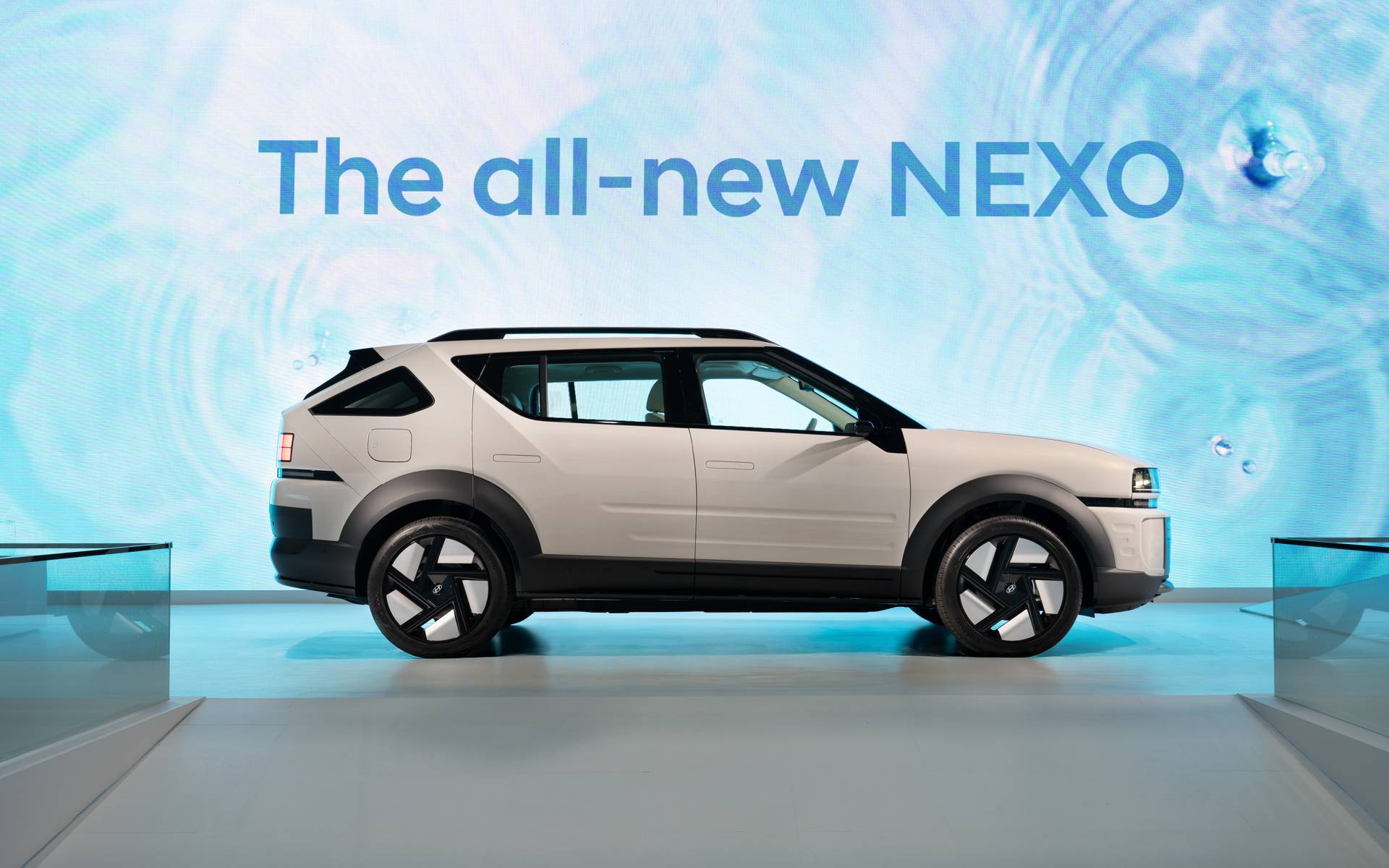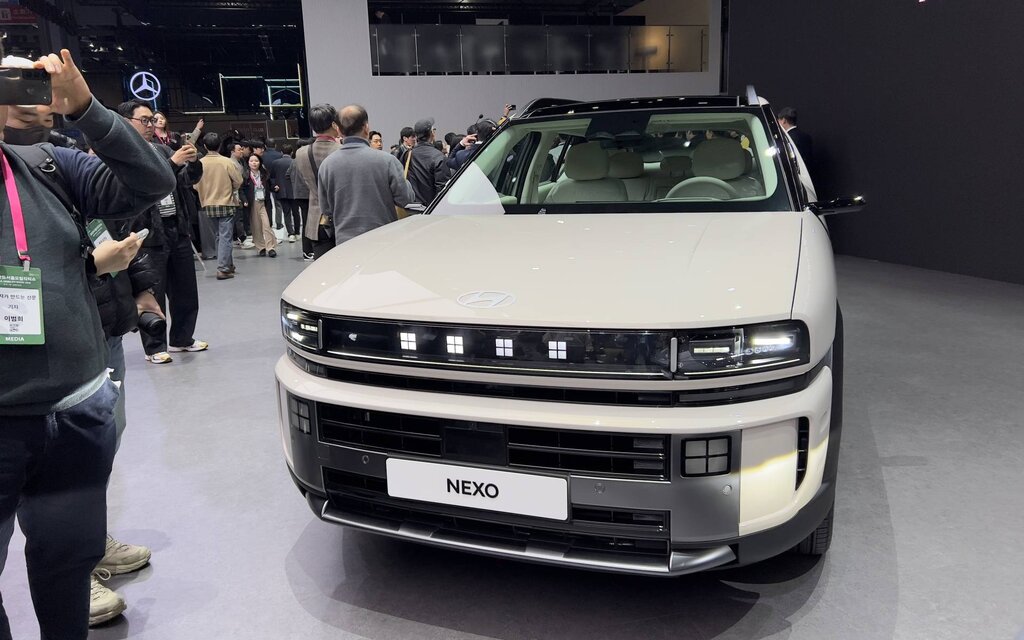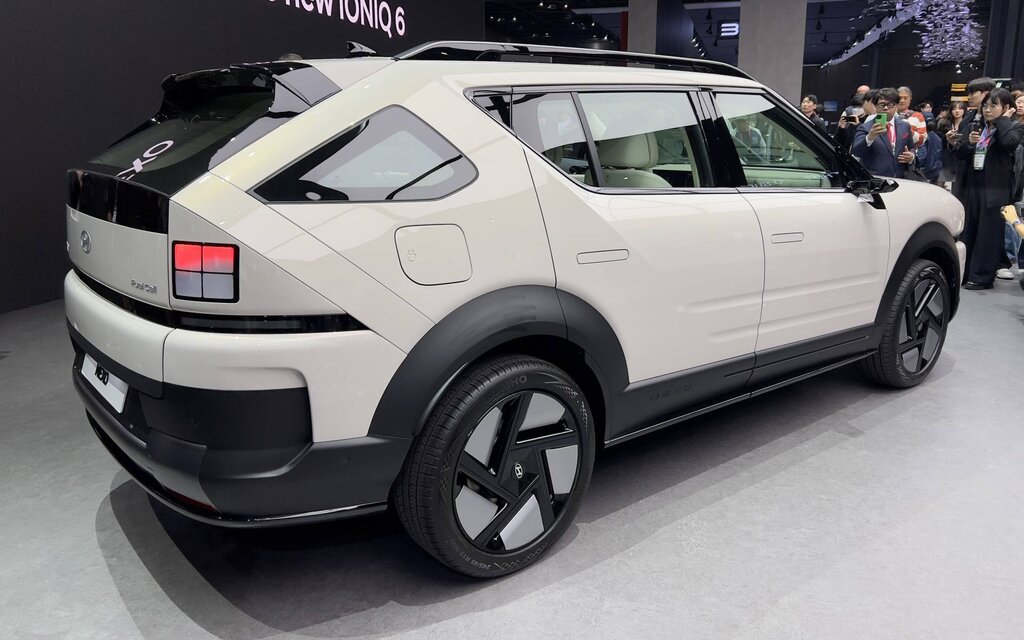All-New 2026 Hyundai Nexo Looks Kind of Cool, Hydrogen Be Damned


Hyundai yesterday introduced the second-generation Nexo and the third generation of its fuel cell electric vehicle (FCEV) technology in a world premiere the Seoul Mobility Show in South Korea.
Longer, wider and taller than its predecessor, this new, boldly styled crossover is based on the Initium concept unveiled last fall, embodying the automaker’s ‘Art of Steel’ design language. It looks kind of cool and rugged, yet a bit weird at the same time. Take the arch-shaped cross section in the rear or the horizontal groove patterns on the doors, for instance. Meanwhile, the 4-dot ‘HTWO’ lamps are an FCEV-specific design cue encapsulating Hyundai’s new HTWO hydrogen brand.
Read also
- Hyundai’s Next Step in Hydrogen Tech Previewed by INITIUM Concept
- Hyundai Lays Out Plan to Popularize Hydrogen

Inside, the cabin is designed to evoke the comfort of a home, starting with the first-row Premium Relaxation Seats with leg rests. Other highlights include the curved, driver-centric display, intuitive controls and island-type centre console with impressive storage space. The digital side mirror displays integrate seamlessly as part of the dashboard, but they likely won’t make it in some markets like North America.
In the rear, the trunk now has a capacity of 993 litres, enough to accommodate up to four golf bags. It also comes with a platform designed to allow users to select and utilize accessories tailored to their needs. Obviously, sustainable materials are used throughout the vehicle, including bio-process leather, bio PU leather, recycled PET fabric, linen fabric, bio plastic, bio TPO skin, bio paint, bio PU slab foam and recycled automotive plastic waste.

New Fuel Cell System and Powertrain
The all-new Nexo boasts significant powertrain advancements. Total output has been increased from 135 kW (181 hp) to 190 kW (255 hp), while the battery’s output has doubled from 40 kW to 80 kW. As a result, 0-100 km/h acceleration is achieved in 7.8 seconds compared with 9.2 seconds for the previous Nexo.
Hyundai is targeting more than 700 km of range (based on the WLTP test cycle) from a five-minute charge. The hydrogen fuel cell stack features improved low-temperature operability and durability enhancements, including to the membrane, and a uniform cell performance structure. With the ‘Wake Up’ stack anti-freezing function, the nozzle isn’t likely to get stuck when charging the vehicle in cold weather as we’ve seen at times in the past.

By the way, hydrogen tank capacity now stands at 6.69 kg, up from 6.33 kg in the previous-generation Nexo.
As for driving, various aerodynamic and acoustic improvements help reduce drag and noise levels, the e-Handling system optimizes motor torque control for improved handling, and a Smart Regenerative System automatically adjusts regenerative braking based on navigation data and distance to vehicles ahead. Hyundai’s most advanced safety and driver assistance features are all available, too.
Company executives have told us the second-generation Nexo will launch in Canada early in 2026 despite hydrogen refuelling stations still being extremely rare in the country. More details will be announced later this year.








